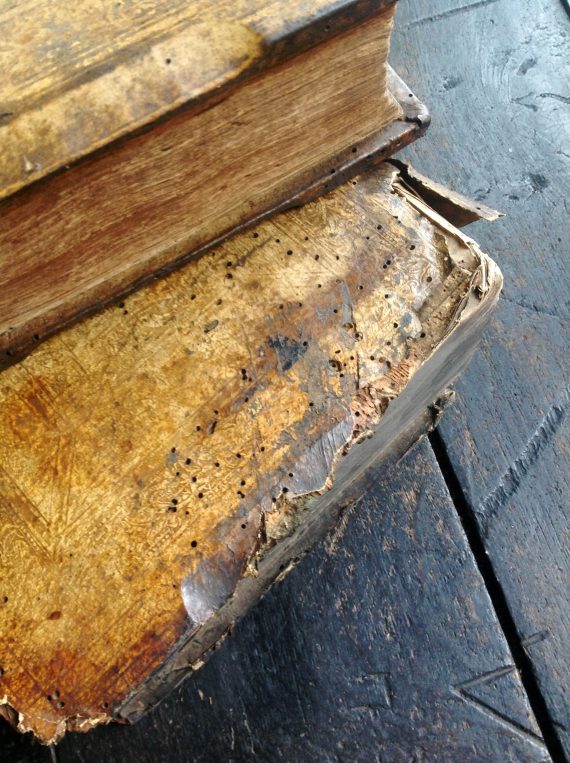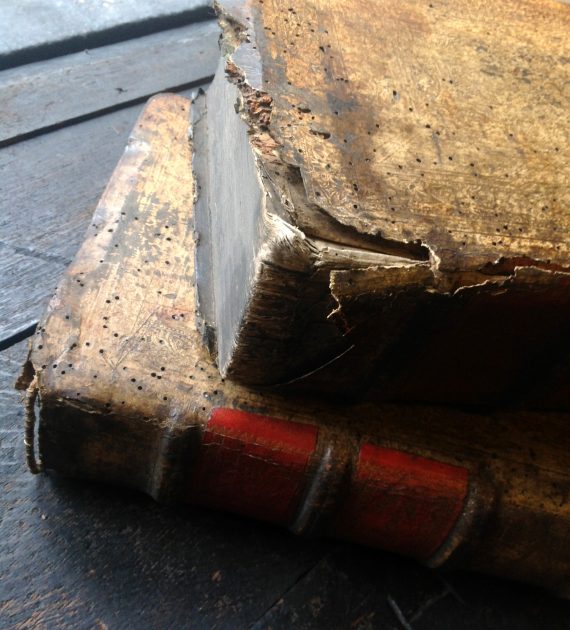- About
- Visiting
- What’s On
- Venue hire
- Catalogues
- Collections
- 101 Treasures of Chetham’s
- Digital Resources
- The Flowers of Histories
- A Book of Hours from France
- The Manchester Scrapbook
- Thomas Barritt of Manchester
- Art Treasures Examiner of 1857
- Manchester Association for Constitutional Order
- The North Western Museum of Science and Industry: Some Reminiscences by Richard Hills
- Criminal Manchester
- The Cup of Destiny
- Athenaeum Souvenir
- Middle English Manuscripts
- Manchester and Liverpool of Today
- Hollingworth’s Mancuniensis
- Memoir of Cecil Wray
- William Seward’s Diary
- The Anti-Monopolist
- Fishwick’s History of Rochdale
- Knyvett’s Defence of this Realm
- Tractatus de Nigromantia
- Axon Ballads
- Printed Books & Ephemera
- Archives & Manuscripts
- Prints and Photographs
- Blog
- Support us
Pesky Pests

Today’s blog continues our conservation series, this time focusing on the damage to collections by pests. The majority of library and paper-based collections will have objects affected by insects and other pests. Such damage appears in the form of holes in books and bindings, pitting to surfaces and chewed areas. This can either be a historic attack or an active one, it is important to distinguish between the two. Books and paper are at risk due to their organic materials which provide a food source for insects. For example, the adhesives used in bindings are animal-based, as are leather, vellum, and parchment. Even wooden boards, textiles, and paper are not exempt due to their natural makeup. There are a variety of pests that are drawn to these organic materials.
One of the most common insects that cause damage is the furniture beetle, also known as woodworm which will attack books as well as wooden furniture. Most of the damage comes from the larvae. The beetle will drill through a book and lay eggs inside, the larvae will then hatch burrowing out by eating holes throughout the book until they emerge as adults. Death-watch beetles cause similar damage but are larger than woodworm.
The pests that are drawn to animal products include moths, carpet beetles, and spider beetles. This is because they get their food from a source of protein known as keratin. Keratin can be found in vellum, parchment, leather, and the glues on bindings. Another pest that causes damage is silverfish which will graze on the surface of paper and book cloth. Booklice will also cause damage in a similar fashion to silverfish. Insect damage can be identified by its sharply defined edges and curves. Rodents will also cause problems in collections, mice for example will gnaw and chew on books as they create nests and use them to sharpen their teeth. In addition, their urine and droppings can stain the paper.
 Above: an example of pest damage caused by the furniture beetle.
Above: an example of pest damage caused by the furniture beetle.
The prevention of pest damage is key here as the treatments required for removal can be both costly and cause further harm to collections. By using Integrated Pest Management (IPM) Library staff can prevent or minimise problems. IPM methods are a series of monitoring and prevention methods. For example, pests are more likely to reproduce and look for food in warmer conditions, so it is vital to try and prevent temperatures from being too high when storing books and paper. Good housekeeping is essential for deterring pests, as the presence of dust which is made up of organic materials such as hair, skin, clothing fibers can encourage feeding, almost like a starter before they begin eating the main course. In addition, Relative Humidity (RH) must remain stable between 45 and 65 as too damp or too dry conditions can encourage infestations depending on bug species.
As well as keeping the above conditions under control monitoring tools can be used as part of IPM. For example, blunder traps can be used to trap insects such as silverfish, carpet beetles, and other insects. These are small sticky traps that should be placed in corners and alongside walls and shelves following pest movement patterns. These traps can inform staff of new outbreaks or an increase in number. Pheromones can be used alongside traps that will draw insects such as moths.
Collections should be checked for signs of recent attack. Indicators include new holes and frass (bug poop). Frass is a good way to tell if the damage is new or historic. Insecticides can also be used to control numbers; however, they must be health and safety approved and non-toxic such as constrain. Constrain is pH neutral and water-based meaning it will not give off harmful fumes. Another option is to use desiccant dust around corners and space edges, this dust will also indicate pest movement if disturbed. These insecticides should never be used on actual collections as they are too harsh.
There are a few different approaches for dealing with pest-infested items. Firstly, to determine if an object is contaminated it should be isolated and either wrapped in polythene or Tyvek (a breathable polyester). Treatment will depend on the pest species and the severity of the infestation. Specialist treatment should only be carried out by trained conservators. Freezing is a popular method for libraries and archives as this will kill eggs as well as larvae. Books are sealed in polythene and the temperature must be -30°C for three days or -18°C for two weeks. It is crucial that books remain in polythene until they have returned to room temperature. Otherwise, there is a risk of water damage from condensation. This treatment cannot be used on delicate items such as manuscripts. In some cases, heat can be used however, this is a risk for heat-sensitive items. Books are placed in a temperature humidity-controlled chamber at 50°C. Other methods involve placing objects in environments that cause oxygen deprivation with chemicals. These treatments can only be used at a conservator’s discretion and must be weighed against the likelihood of further object damage.
Below: is some double whammy damage from furniture beetles and rodents.

We are pleased to report we have no current infestations here at the library and have a strong IPM system in place. Your generous support is helping us to fund conservation work like this throughout this pandemic while our visitor tour income is reduced. Thank you to every single person who has donated to our Covid-19 Appeal so far.
By: Laura Bryer

3 Comments
Alison Louise Preston
This is very interesting & informative information.
Thank you, Chetham’s Library for sharing Pesky Pests with your followers.
Mark
This is a welcome article.
One thing I would like to add: unless there is frass present and/or you can accurately recall how extensive the worming was when you last looked at the book, it is not always easy to judge whether worm damage is entirely historic or ongoing.
One aid I encourage custodians of antiquarian books to resort to is to keep a note (if the worming is minor) or photographs (if the worming is extensive) inside the book that records the exact degree of worming at a particular date. When examining the book at any later date it is a very simple matter to determine whether the worming has increased by referring to the note or photographs lodged with the book.
This eliminates doubt altogether, and is a useful and inexpensive safeguard in the preservation of important books and documents.
ferguswilde
Thanks Mark, yes, documenting the condition for later comparison is an important part of the process. In our case we’re generating spreadsheets for each shelf as conservation assessment continues, so it’s possible to trace changes across time.